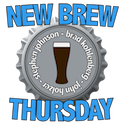Celebrating 75 years of Beer
The Volstead Act, also known as the National Prohibition Act, established the legal basis for the federal government to enforce the Eighteenth Amendment to the United States Constitution, which prohibited the manufacture, sale, or transportation of intoxicating liquors within the United States and its territories.
The bill was vetoed by President Woodrow Wilson but overridden by Congress on the same day, October 28, 1919. The Volstead Act defined beer, wine, and other types of liquor as being illegal in the United States if the alcohol content of those beverages exceeded one-half of one percent. (Even cough syrup has to have more than that!!) In conjunction with the Eighteenth Amendment, the Volstead Act ushered in the Prohibition Era in America.
With the passage of the 18th Amendment to the Constitution, brewers looked for other sources of revenue. By removing most or all of the alcohol from conventional beer, brewers were able to mass market a legal product labeled “cereal beverage,” but almost universally known as “near beer.”
These beverages carried colorful names such as Bevo, Chrismo, Graino, Barlo, Bravo, Becco, Cero, Gozo, Kippo, Lux-O, Milo, and Mulo. (Italian brewers perhaps?) By 1921, production of “near beer” had reached over 300 million gallons a year. Food critic Waverly Root described “near beer” as “such a wishy-washy, thin, ill-tasting, discouraging sort of slop that it might have been dreamed up by a Puritan Machiavelli with the intent of disgusting drinkers with genuine beer forever.”
On March 4, 1933, at the age of 51, Franklin D. Roosevelt was inaugurated president. In one of his first addresses to Congress as president, FDR announced his intention to modify the Volstead Act with the Beer and Wine Revenue Act. Congress passed the Beer and Wine Act n March 22, 1933 – just two days after FDR’s inauguration. (The man had a mission.)
Essentially, the Beer and Wine Revenue Act was another tax – BUT, it exempted both beer and wine from the Volstead Act, re-legalizing the manufacture and sales of beer and wine. It became effective on April 7, 1933.
The Beer and Wine Revenue act was followed, in December 1933, by the passage of the 21st Amendment, which officially ended Prohibition.
2008 marks the 75th year since the official end of Prohibition. The following is a list of important landmarks in the overturning of the Eighteenth Amendment.
March 22nd - Congress signs the Beer and Wine Revenue Act
April 7th – Beer and Wine Revenue Act officially goes into effect
December 5 – Twenty-first Amendment is ratified
On each of these dates, I suggest toasting a beer (or five) to good old President Frankie DR.
“This one’s for you Frankie DR. You’re my hero. Cheers!”


















